The Seventies were a very different ten years for me. Just as the Sixties had been a time of great change for me, as well as our culture, so were the Seventies. This was another powerful time of personal growth. I made only two movies in the first two years of this decade. These were The Horsemen and Soylent Green. Then began an intense spiritual quest. It took many diverse forms. I traveled to India late in 1972 and stayed some months in the Sivananda Ashram at the base of the high Himalayas in Rishikesh. I studied two years in Scientology and was “audited” intensely most of those two years.
I studied Kriya Yoga under the sweet presence of Yogananda and his lineage of Masters. I met and immersed myself for several years under the grace, love and guidance of the Siddha Master, Swami Muktananda. While with him, I changed my name to Mirabai, a name he gave me. I traveled all over the United States to his “intensives” where I wore saris and danced and chanted in bliss. I met my spiritual mentor and most Beloved friend John-Roger and I continued my learning and growth in these areas.
I had a tender and soulful relationship with Ravi Shankar.
I was married again in 1978 to a powerful and accomplished film agent who became president of Columbia Pictures. Once again I gave up my career as an actress, this time for very different reasons. Unbeknownst to me , I had married someone who only wanted me to be a wife and fulfill his dreams. In time it became clear that he was not there for my dreams. It took me a number of years to find my career again.
Occasionally, in the late Seventies, I worked as a guest star in Love Boat and Fantasy Island for Aaron Spelling. I wrote my first screenplay with Ron Sossi, the creative director of the Odyssey theatre in Los Angeles. All of these events are by no means in order or complete. These are some of the threads of the tapestry of my life in the Seventies. I look forward to sharing in more detail, soon in a book. To me, my life is to be shared. The intent is simply that there may be some helpfulness or upliftment for someone.
The Horsemen
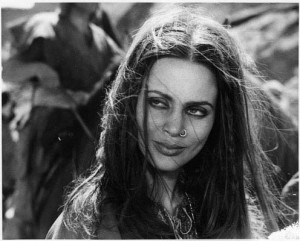
In the summer of 1969, I was in London making a film for Columbia Pictures called The Buttercup Chain. My agent at CMA, called me and asked me to meet with John Frankenheimer. He was preparing a movie to be shot in Afghanistan and Spain, called The Horsemen starring Omar Sharif.
He had shown interest in me to play the primitive Gypsy woman opposite Omar. I thought how odd, as I had only appeared in films so far as a very “60’s” hippie girl. We met at Claridges, and he expressed enormous enthusiasm and confidence that I was perfect to play this “wild” role. He wanted to send me immediately to Afghanistan where he had already shot second unit photography, so that I might actually absorb the tone and feel of the country and its tribal people. Afghanistan, at the time, in 1970 was a monarchy.
I was soon on my way to Kabul, Afghanistan as a guest of the King, and thereafter on a journey into the south to visit and stay with the Koochi. The Koochi are an “aristocratic” tribal people who welcomed me with exotic drums, dancing, and a feast. These people had never seen such a western woman, unveiled, in man’s pants, and so joyful and expressive that she was kissing and hugging their camels. I stayed with them for a week, and with an open heart absorbed them, their behavior and culture. My only challenge was to diplomatically refuse their generous offer of a Koochi husband. The character of Zereh, in the film, was, in fact, not as much of the temperament or expression of the Koochi, but more a Jat which is a much less respected gypsy. A more deceitful and desperate life is lived by the Jat.
Soon I returned to Madrid, to begin principal photography on The Horsemen, which took me to various locations all over Spain. Working with Omar was a delightful experience. He is a courtly man and tremendously generous. He was very nurturing and loving during our relationship. To prepare becoming the character of “Zereh” I immersed myself in her look and behavior. After makeup in the morning, I loved to roll in warm dirt. I pierced my left nostril in a Madrid jewelry shop. My hair was now black, and my eyes painted in kohl. Making The Horsemen was an exciting life and film experience.
The Horsemen on IMDB
The Gang that Couldn’t Shoot Straight
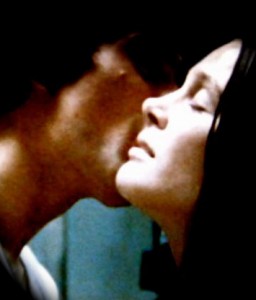
By early April of 1971, I had moved to Santa Fe, New Mexico with my two year old son and had pretty much, in my mind, left my work and life in Hollywood. I had released my press agent, my nanny, my assistant, and I tenuously kept my agent and accountant. I was unsure of everything in my life as I had known it. I was 25, my marriage to Ryan O’Neal had shattered over his public affair with Barbara Streisand. This spontaneous move to Santa Fe was the only way I knew to find a new life. However, I had not only left him, I basically chose to leave everything I had created, including a successful career.
In the early summer of 1971, I got a call from my primary agent at CMA (who later became my second husband) and accepted , with his urging, a movie soon to be made in New York City, called The Gang That Couldn’t Shoot Straight. It was a black comedy written by Waldo Salt from the original book by Jimmy Breslin. It would be starring a new young actor opposite me, named Robert De Niro. I took the job on faith to keep myself busy. I would be playing an Italian girl from Brooklyn, with a Brooklyn accent. They asked me to gain 15 pounds, dye my hair black, and learn the accent “fluently”. This panicked me. I had a good ear for sound, but no confidence with accents.
Rehearsals began at the Stanhope Hotel with director James Goldstone and “Bobby”. During the nights, I would be working on my accent. I remember the first day De Niro and I met. He came into rehearsal seemingly very ordinary, quiet and “mumbly” and with a very endearing sweet, shy way about him. His eyes didn’t make direct contact for very long. The three of us creatively discussed the film, our characters, and their relationship, which was a love affair between a young con-man fresh from Italy with kleptomania as his natural instinct, and a tough vulnerable girl from Brooklyn, the younger sister of a Mafia leader.
One experience during rehearsals was especially memorable. Bobby’s Italian accent was impeccable almost immediately. I was struggling. At the start of the second week of rehearsal, the director asked us to leave the hotel in character, accents included, and spend the day with my character introducing his character all around New York, as if he had just arrived from Italy. We were to be spontaneous, take the bus, and go wherever, as long as we never stepped out of character. I was a bit horrified, because I was now aware I was working with a great talent who had a perfect accent, and I felt I didn’t have a clue yet about my character, let alone a proper Brooklyn accent.
Off we went on the Fifth Avenue bus. We got off near the Empire State Building. I was stone silent for almost the whole ride, for fear of demonstrating my ineptitude. Slowly as we walked west toward Macy’s I plunged into behavior that began to feed my sense of this girl, and my terror eased. We walked into Macy’s, I now leading the way with a quality of my character’s sweet toughness. We looked around the first floor, talked in character, and walked out. I quickly felt a hand grab me. I turned and a very big man had one hand on me and his other hand grabbed Bobby. He opened Bobby’s jacket and two new shirts fell out. We were pushed back into Macy’s, up the elevator to a floor that was nothing but a jail! He was not at all interested in the fact that we were actors rehearsing a film. As far as he was concerned we were partners in crime and he arrested us.
I was amazed to see Bobby’s response to all of this, with him being a true New Yorker. As a native New Yorker, he knew enough to be scared. I could afford by joyous naïveté, having grown up in safe rural environments. I was admittedly in absolute joy at the adventure and I trusted that it would resolve perfectly. In the mean time, I was going to enjoy every outrageous moment. I was searched, fingerprinted, and booked. We were on the way into their jail, when one of them, after studying my credit cards, license and the papers in my wallet, recognized me from Peyton Place. Suddenly it all changed and I was faced with fans, not tough “dicks”. Our producers were called and we were soon released.
In the summer of 1971, I had many fascinating experiences making this film, including having a tempestuous relationship with Bobby. I also spent my spare time with Andy Warhol, his entourage, meeting and hanging out some with Patti Smith and Sam Shepard. It was a sad time, a creative time, and a very freeing time. It proved not to be a great movie. De Niro was great, I was very good, and my life was profoundly enriched.
The Gang That Couldn’t Shoot Straight on IMDB
Soylent Green
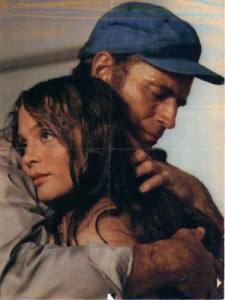
In early 1972 Guy McElwaine, my agent at CMA, called me at home in Santa Fe, New Mexico. He was enthusiastic about me taking a role in an MGM movie called Soylent Green. MGM, at the time was under the management of Jim Aubrey. Guy told me Soylent Green had a science fiction theme and would be starring Charlton Heston and Edward G. Robinson. The money was good, and he felt it would be valuable to work for Aubrey, as well as with Heston. I agreed. It was more to simply work again and keep myself in the game of acting. I was starting to feel that I was losing passion for my career, as I was awakening to a deep yearning to develop myself spiritually. It was concerning me, as I almost felt disoriented now in the “Industry”. I didn’t judge it, I simply felt uncomfortable and overcome with a sense of hunger for more understanding of my life, and life itself. A lot of things didn’t make “sense” to me. This had always been the case, but now I felt urged to actively seek answers. I took Soylent Green as a way to stabilize myself and to see where I was in terms of my career as an actress in Hollywood.
Richard Fleischer was our director. He and Heston appeared close. Both were relatively cool toward me, but in fact I was dealing with my own sense of fragility which proved to be perfect for my performance of “Furniture”. It’s odd how often certain roles provide the opportunity to pull from a timely emotional state. I have often used my roles to open up a part of myself that needed to flow.
My sweetest memory of this movie was working with Edward G. Robinson, or “Eddie”. It would prove to be his last movie. He died only several months after we finished filming. He was very short, and I was very tall. Of course my height was aided by my 4 inch platforms of that time. I remember our final photo shoot with Charlton Heston, Chuck Conners, Eddie and me. Eddie snuggled up under my breasts, put his arm around my waist, looked up and said, “I am standing here!” In the midst of his mischief with me, was a precious and sensitive regard. At the cast party, he wanted me to sit next to him. It was the last time I would see him. I cried driving home that night, so touched by his refinement and kindness. He was an oasis.
I did not believe that Soylent Green would be very successful. It was about a dark time in our future when the environment would be destroyed by human greed, and people would be eating people to survive. I thought it was a stretch and a bit of a folly. Soylent Green today is seen as a highly regarded cult film. Eddie Robinson’s death scene, is one of the saddest and most poignant on film. A week after I completed the film, I was on a plane to India and an Ashram in the Himalayas where a new chapter of my life would soon open.
Soylent Green on IMDB
Baba and Mirabai
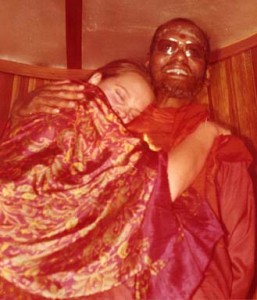
Within a week of completing Soylent Green in 1972, I was on a plane to India. I took little with me and traveled coach by choice. I thought it would be more in the spirit of surrender to my adventure. Peter Sellers had given me a letter of introduction to his teacher. It was a Swami who had a small ashram on the Island of Mauritius in the Indian Ocean. I decided to leave so spontaneously that I did not write ahead. I simply arrived in a battered old cab at his ashram and gave him the letter of introduction. His name was Swami Venketesananda, and he welcomed me warmly. I stayed two weeks, and then with Swamiji’s advice, I decided to travel on to India and to Rishikesh. Rishikesh is high in the Himalayas and is a spiritual center for India. I was going to the Sivananda Ashram , now with a letter of introduction from Swami Venketesananda.
After any number of adventures, I arrived at the Sivananda Ashram and stayed for two months. I had incredible and wonderful experiences during my stay. I was very happy. However, the physical conditions were rough. I slept on a board in a cement cell, and the food was not resonant with either my genetics or my tastes! I didn’t care at all. I was so content to be in a place where the pursuit of knowing God was the entire focus. Every day was filled with various disciplines: chanting, meditation, prayer and contemplation. The focus was Hindu, but I only saw it as a path to know God. India, of course, was especially familiar to me because of my grandfather.
There were 200 Swamis in training there. All of them were men. I was one of four women studying there as a guest. One of these Swamis was recommended to me to become my private tutor in Advaita Vedanta, a very esoteric form of Hindu study. His name was Swami Tejomayananda. Every morning at 3:30 am I would go to his “cell” and he would teach me. He was very kind and simple with me, and I was so eager to learn. After several months, I knew I had to return home. I had a small son. He had been staying very happily with his grandparents. He was all that called me home.
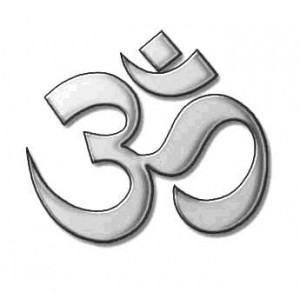
I was sad to leave, and somewhat afraid. How was I going to “weave” these experiences into my career and life in Los Angeles? On my return from India, my son and I moved into the Château Marmont. It was a perfect transition. It was a residence filled mostly with artists. You could almost call it an ashram for artists, but a wild one. It was the early Seventies. It was actually humorous. I was wearing white robes, drinking carrot juice, meditating and mothering amongst rock ‘n’ rollers, actors and writers. It was a colorful place to be. I did establish some relationships at that time with Phoebe Snow and Dave Mason. They are my dear friends today.
Someone told me that a certain Swami Muktananda was coming from India, and would be having a gathering for people to meet him. They said he was very powerful spiritually, and with but a “look”, an individual could have an important spiritual awakening. This was exciting news to me, and I planned immediately to go. The night before this meeting, I went to the Self Realization Fellowship, meditated all night, and prayed that this might be my Guru. I wanted a teacher! I had been around a primarily Hindu path. In that context, it was natural to want a Guru. The word Guru itself means “dispeller of darkness”. I wanted more light in my life. My grandfather had passed away, and no one in my life at the time, reflected back to me what interested me most, which was the desire to be closer to God, and to know God intimately.
When the door opened the next morning, who stood there but Swami Tejomayananda, my tutor in India. He had since left the Sivananda Ashram, chosen Muktananda as his Guru, and was now travelling with Muktananda throughout America. We stood there stunned, seeing each other once again, but in Santa Monica, California. We hugged (not usual for a Swami to do) and he excitedly pulled me in and threw me in front of Swami Muktananda, or “Baba”. Baba smiled sweetly at me and in Hindi said, “Please come to the retreat”. It was beginning the next day for one week. I was there.
For the next two years, I was as close to Baba as I could be. I traveled to many retreats, or “intensives”. His translator at that time, was a gorgeous and humble Indian girl named Malti. Today she is Gurumayi, the direct inheritor of his spiritual legacy. Baba was a great master. He named me Mirabai, and lovingly nurtured and accelerated my growth. I would often speak to Baba about leaving my career behind. He would take me aside and say, “No, what you do is not a concern. Who you are is the point.” He would ask me to introduce him at many events. This was funny because I was trying so hard to be unknown. He would gently but firmly thrust me back into the world. He remains in my heart as my beloved Baba.
Learn More About Baba Muktananda
Aliens from Spaceship Earth Documentary
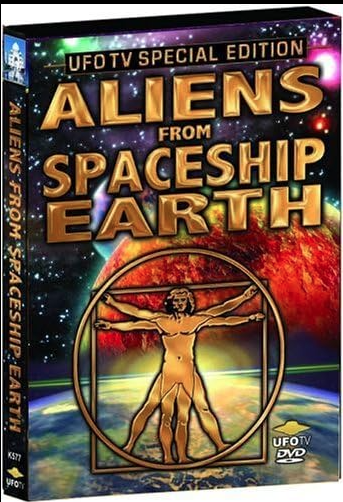
Aliens From Spaceship Earth, a documentary directed by Don Como and narrated by Donovan, is a treasure trove of 70’s spiritual counterculture. The documentary features LTY sharing about her experience with Baba Muktananda. Watch the video below to hear LTY talk about Baba and see some incredible archival footage.
J-R and LTY
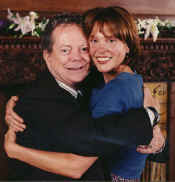
In late 1973, an actress friend of mine, Sally Kirkland, stopped by my home to visit with me. She was newly married, and eager to share about her wedding. For some time she had been encouraging me to meet her “spiritual teacher,” John-Roger. I had refused heartily, saying that I was a “one-guru woman” as I had been working and studying for several years with Baba Muktananda, a great Indian Siddha guru. On this day, in typical and wonderful Sally style, she left me with three of John-Roger’s seminar tapes. I must admit I was curious, so I was inclined to listen with no resistance.
I don’t know how to fully describe the effect these tapes had on me. John-Roger appeared to ramble. He had a Utah accent, and a very funny, simple and colloquial humor. It was an extremely different approach from the formal Hindu style and grandeur that accompanied Swami Muktananda. In fact, John-Roger almost sounded rural to me. However, as I continued listening, something inside of me was deeply moved. I was excited, and I kept thinking to myself, “He is answering my deepest questions”.
I recognized that what he was saying was true for me. I experienced a great feeling of relief. I felt that what I’d been seeking for years was being more fulfilled and addressed by this man. It took nothing away from all I had experienced and gained in my studies and practice with Muktananda and other teachers. It simply felt like home. I had come home.
The next day I called Sally and asked if I might meet John-Roger, and a few days later she took me to a seminar where he was speaking. When John-Roger entered the room, he came over to me, took my hand and said, “Welcome” with what seemed like all the warmth and depth of the universe itself. Once again, I was experiencing an unusual excitement, and admittedly I was also a little confounded. He appeared so ordinary! There were no frills about him whatsoever.
He began to speak, and it was not a “glamorous” way of speaking. He was blunt, direct, funny, and yes, he did ramble. However, there was an extraordinarily powerful and loving energy present as he spoke. I fully and profoundly experienced the presence of Spirit.

The next day I ordered all of his books and many of his tapes. Soon afterwards, I asked to meet with him. We met, and kindly but directly, he said that I should always check out everything he taught and make sure it worked for me and for my life. If it worked for me, he encouraged me to take it and use it for my upliftment. If it did not, he said the door was always open for me to go on to what would work for me. I left that meeting feeling a peace and an awareness that I had found my next steps in my journey home to God.
While I’ve never been a “joiner” by temperament or spirit, I am proud to be involved with the Church of the Movement of Spiritual Inner Awareness (MSIA), because I am joined in my heart with good people who love God dearly, and enjoy the processes and practices for Soul Transcendence taught by John-Roger. His teachings are inclusive and respectful of all faiths, and affirm quite simply that the greatest value in living is loving. He teaches the ancient path of Soul Transcendence, that all things come from God, God loves all of its creation…and not one soul will be lost. Not one.
Since studying with MSIA, I have never felt confined, organized, suppressed, controlled or ritualized. In fact, in MSIA, personalities and vocations are about as diverse as you can get. The common goal is to know more intimately and dynamically the God in each one of us. This is what connects us. These teachings are available to all, however, as John-Roger has said, they are not for everyone. Just as there are six billion people on the planet, there can be that many ways to love and seek God.
Over the years of my spiritual studies, I have learned that it is so essential to be discerning where I place my trust, especially in the area of my inner spiritual development. It is a sacred and sensitive journey, but ordinary at the same time. It has proven wise for me to carefully explore what works for me. I then remain responsible, self-empowered, and master of my own spiritual destiny. I have always found it essential to be around people who inspire me and uplift me to a greater awareness of who I am. I work hard to stay vigilant in order to stay free. This is my responsibility, and every day is a new and glorious opportunity to focus on and affirm my partnership with God.
Learn More About John-Roger